Modeling Self-Sealing Mechanisms in Fractured Carbonates Induced by CO2 Injection in Saline Aquifers
在未来,天然气、二氧化碳和氢气将为合适的地质储存点展开竞争。因此,评估所有潜在的储存选项至关重要。一个有前景的选择是利用裂缝碳酸盐岩,这为在枯竭的储层和盐水层中进行气体封存提供了重要机会。
本研究的目标是评估在盐水层中使用碳酸盐岩基质岩石进行碳CCS项目的可行性。尽管由于二氧化碳泄漏的风险,碳酸盐储层目前在碳储存中的排名不高,但它们的基质岩石含有反应性矿物,如方解石和白云石,以及可能存在的自然裂缝,这提供了一个有趣的机会。本研究提出了对裂缝的重新评估,裂缝通常被视为风险因素,但在新的整合背景下,结合了地球化学建模和包含两个不同密度级别天然裂缝的数值模型。碳酸盐基质、地层卤水和注入的二氧化碳之间的相互作用可能导致水蒸发和蒸发岩矿物(称为卤石规模)在多孔介质内的沉积。这些矿物可以在具有比基质高100倍渗透性的高导裂缝中传输。
研究结果表明,裂缝得到填充,形成了防止二氧化碳泄漏的自然密封,这在之前的模型和不同的初始pH值中都被认为是潜在的路径。此外,结果表明,通过二氧化碳及其水相对应物与岩石基质矿物的反应形成了次生矿物。这些矿物,包括道森石,随后沉积在裂缝开口处,补偿了基质中方解石的溶解,并减少了在CCS操作期间裂缝导电性增强的风险。在最初酸性卤水饱和的含水层中沉积卤石规模和/或在最初碱性卤水饱和的含水层中沉积道森石规模,有助于部分抵消由于方解石溶解导致渗透性增强。这一现象使碳酸盐岩成为一个更安全的选项,并突出了它们在CCS项目的潜在适用性。存在的这些规模作为保护屏障,降低了渗透性增加的风险,并增强了储存储层的完整性。
CMG软件应用情况:
CMG-GEM软件被用于模拟所有上述模型中的CCS中的二氧化碳注入。该软件考虑了以下特点:
- 超临界二氧化碳(ScCO2)在卤水中的扩散系数;
- 根据亨利定律计算的二氧化碳在卤水中的溶解度;
- 为了模拟蒸发,水和二氧化碳被视为状态方程中的组分,这样可以进行闪蒸计算,以考虑每个组分在气体和水相中的摩尔分数;
- 使用PHREEQC数据库中的动力学参数,模拟了与主要矿物的反应;
- 考虑了由于矿物沉淀或溶解导致的渗透率变化,应用了Kozeny-Carman方程。
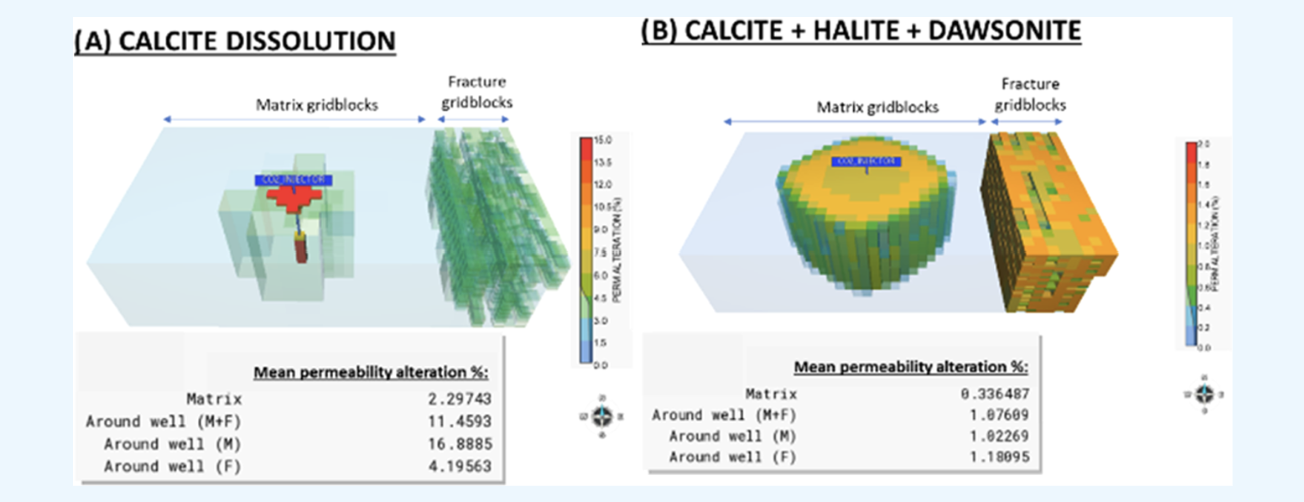
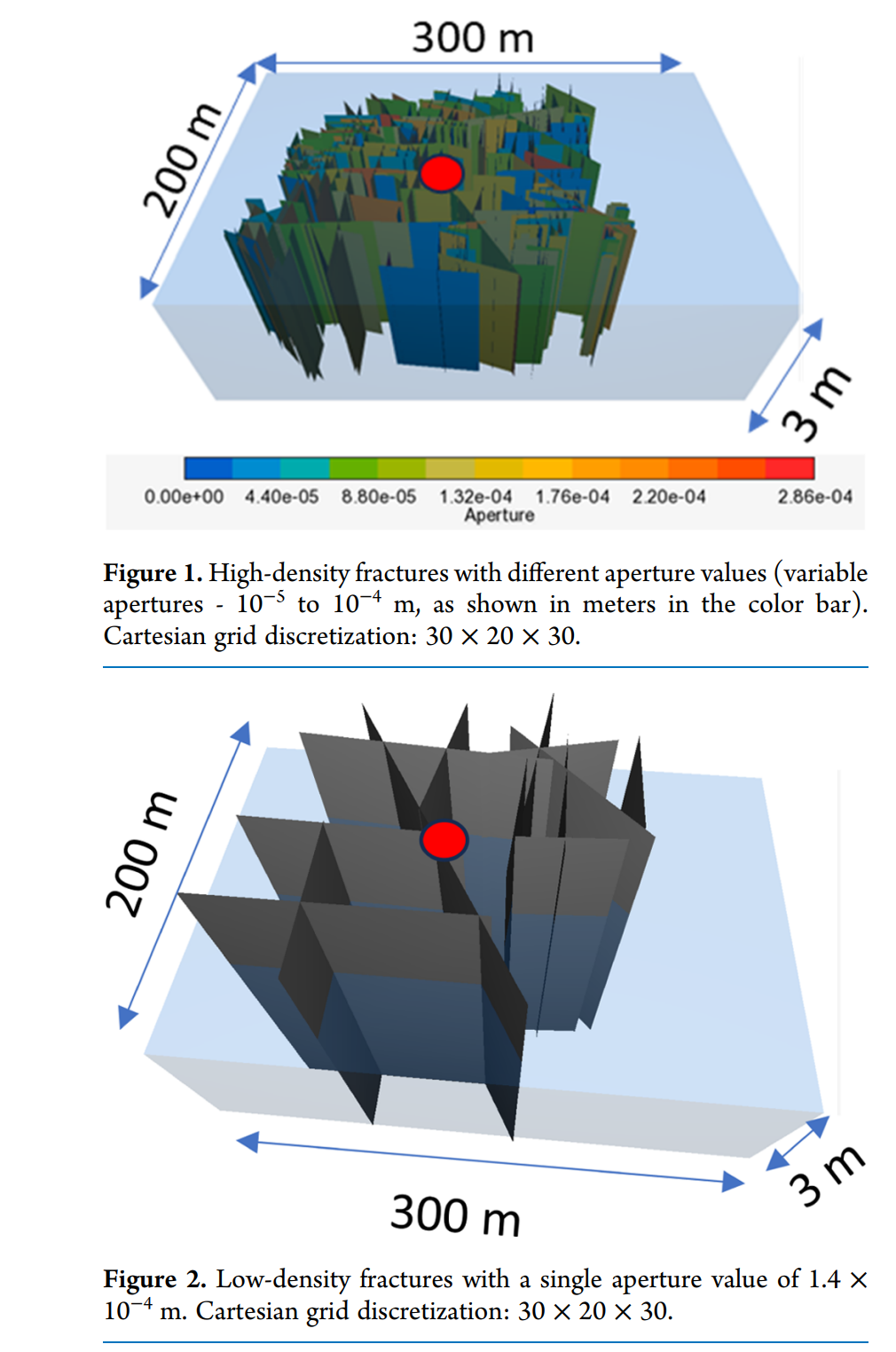
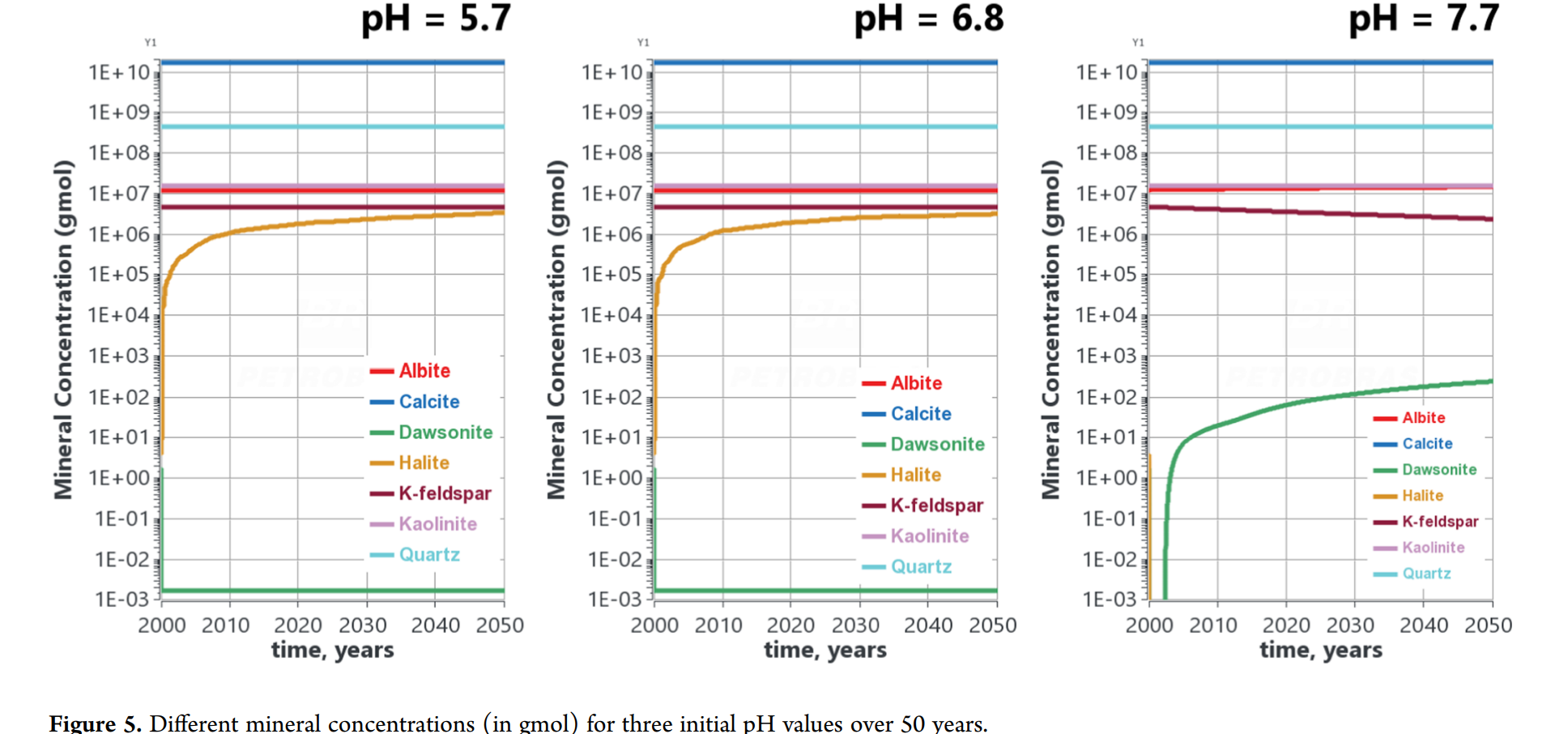
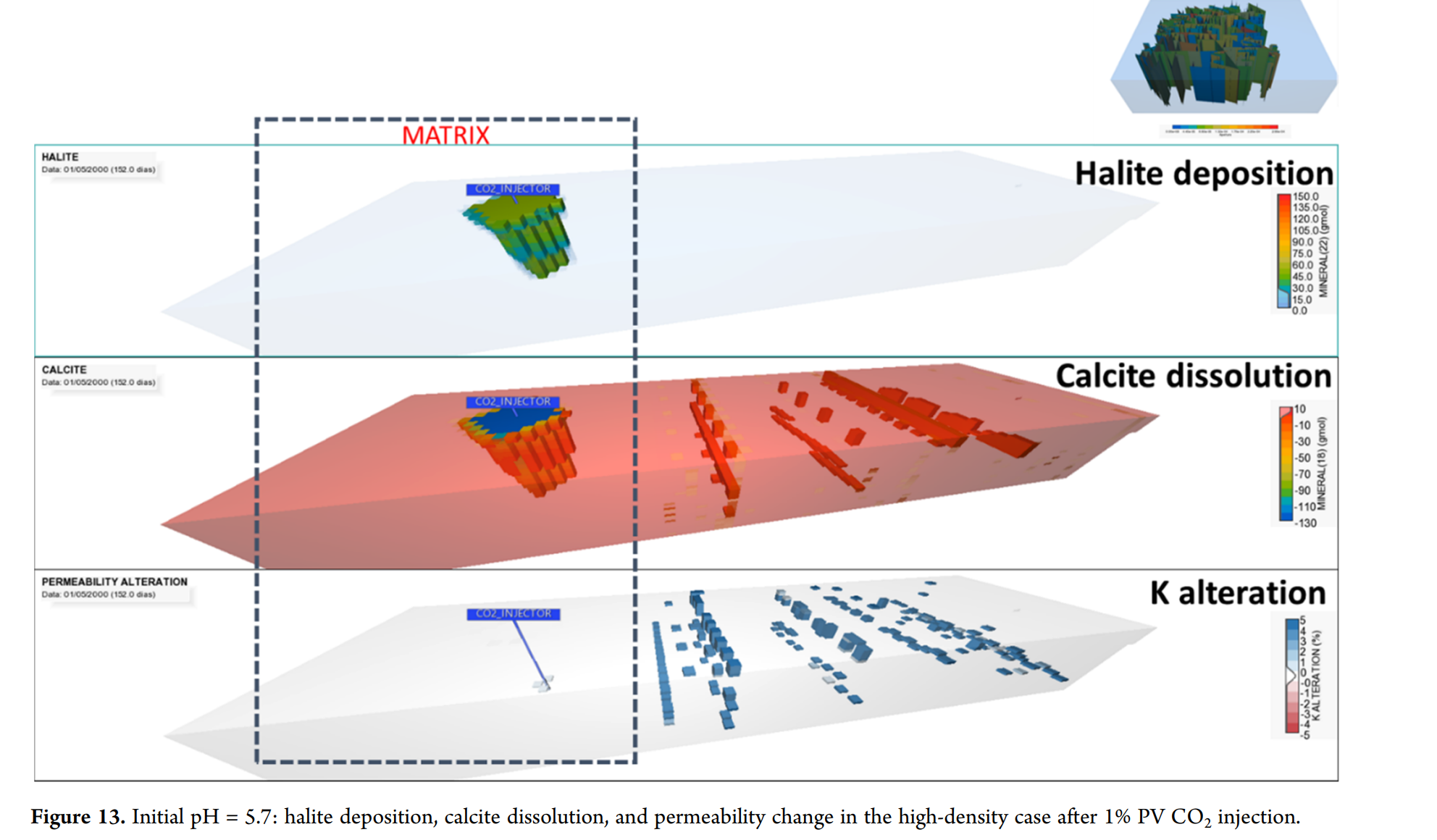
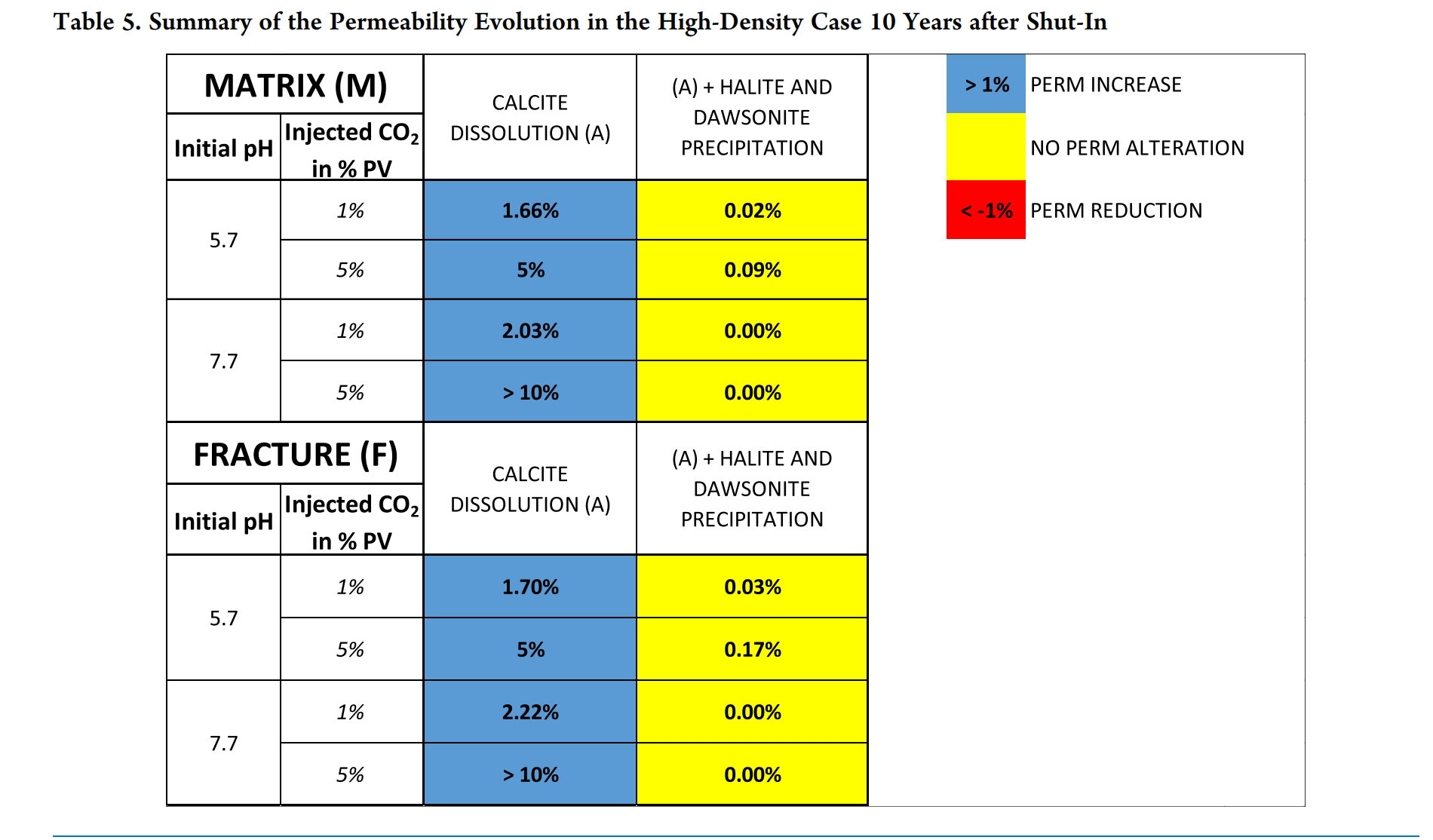
Abstract
In the future, there will be competition among natural gas, CO2, and hydrogen for suitable geological storage sites. Therefore, it is crucial to evaluate all of the potential storage options. One promising option is the utilization of fractured carbonate rocks, which offer significant opportunities for gas sequestration in depleted reservoirs and saline aquifers. The objective of this study is to assess the feasibility of using carbonate matrix rocks in saline aquifers for carbon capture and storage (CCS) projects. Although carbonate reservoirs are currently not ranked highly for carbon storage due to the risk of CO2 leakage, their matrix rock with reactive minerals like calcite and dolomite, along with the possibility of natural fractures, presents an interesting opportunity. This research proposes a reassessment of the role of fractures, which are typically viewed as a risk factor, within a novel and integrated context. It combines geochemical modeling with numerical models that incorporate two distinct density levels of natural fractures. The interactions between the carbonate matrix, the formation brine, and the injected CO2 can lead to water vaporization and the deposition of evaporite minerals, known as the halite scale, within the porous medium. These minerals can be transported within highly conductive fractures that possess a permeability 100 times greater than the matrix. The study findings indicate that the fractures become filled, creating a natural seal that prevents CO2 leakage through what was previously considered a potential pathway in both models and different initial pH values. Furthermore, the results demonstrate the formation of secondary minerals through the reaction of CO2 and its aqueous counterparts with rock matrix minerals. These minerals, including Dawsonite, are then deposited within fracture apertures, compensating for the dissolution of calcite from the matrix and reducing the risk of enhanced fracture conductivity during CCS operations. The deposition of halite scales in initially acidic-brine saturated aquifers and/or Dawsonite scales in initially alkaline-brine saturated aquifers serves to partially counterbalance the permeability enhancement resulting from calcite dissolution. This phenomenon makes carbonate rocks a more secure option and highlights their potential suitability for CCS projects. The existence of these scales acts as a protective barrier, reducing the risk of increased permeability and enhancing the integrity of the storage reservoir.
作者单位:
- 巴西里约热内卢的PETROBRAS公司
- 美国德克萨斯大学奥斯汀分校希尔德兰德石油和地球系统工程系
